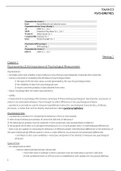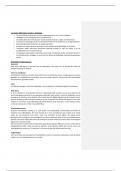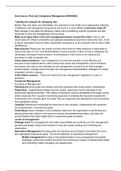Samenvatting
Summary Course 2.5 Psychometrics
- Vak
- Instelling
I offer you a complete summary of the Psychometrics course. I summarised all chapters of the Furr & Bacharach Book and included a lot of colours and graphics to make studying nicer and easier - It's like reading a good textbook, but way shorter. You can be sure that I included all important informa...
[Meer zien]







